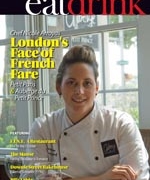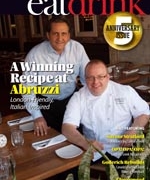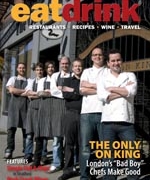Asian-Style Slow Food: A Lesson in Chopsticks
Chopsticks are the gentle cutlery. Choosing them for a meal means relinquishing the more violent actions of stabbing with fork tines and slicing with knife blades. Like surgery, using chopsticks involves delicate procedures and pinpoint accuracy to placidly move morsels of food to the mouth. Western utensils seem to be designed for an aggressive contact sport, but chopsticks allow for more of a tai chi routine. But, of course, that’s only for those who know how to use them well enough to not look ham-fisted. We were getting somewhat used to being stared at all day long because of our white skin and red hair. This is especially true at restaurants when any slip-up with the chopsticks is cause for hilarity for all Koreans around us. In the beginning, we had no choice but to fumble through our inadequacies until it became second nature. We are trying to integrate ourselves into the culture, but even at home when cooking meals for ourselves we didn’t automatically reach for the chopsticks.
“What’s the point of these things?” we often ask ourselves in frustration, knowing that skill would only come with practice, but sometimes longing for a fork to make it through a meal without finger cramps. We didn’t use them for everything, mind you; there was an Outback Steakhouse in Seoul that we frequented and chopsticks with a steak seem absurd, and I couldn’t get away from using my hands for my daily bagel at breakfast.
The chopsticks we use in our apartment are wooden, the same ones you get at a Chinese restaurant in a paper sleeve that need to be snapped in half before using. They are not the most eco-friendly option since reusable and washable ones are obviously a wiser environmental and more hygienic choice, but they are much easier to handle and better at gripping food than the ones given to us at restaurants. Unlike other Asian countries, Korea more commonly uses stainless steel chopsticks. These things take all the fun out of it. They are much flatter and more slippery than the wooden ones, becoming unruly in your hands. Your hands start feeling like some dysfunctional part of your body being manipulated by two thin pieces of metal. It’s beyond frustrating. The travel writer, Bill Bryson, once wrote that he finds it hard to believe that Asian cultures are responsible for so many advancements in technology and still think that eating with a pair of knitting needles is civilized. I agree. They do tend to make Westerners in Asian countries look slightly unsophisticated. Maybe that’s the point of them.
We have found other uses for these steel chopsticks. Jennifer uses them to hold her hair in place. They are good for digging hair and grime from clogged tub drains. And they are perfect for prying gum off the sole of a shoe. As for eating, give me the wooden ones or give me a fork. While eating at The Marche on Thanksgiving, we noticed that nobody was using chopsticks. This was unusual to see in a restaurant in Korea, but it was a welcome change. And the most ingenious souvenir I’ve seen so far is a set of chopsticks with a tiny fork and knife on the ends. All restaurants should have these for foreigners who don’t want to struggle through a meal.
But Jennifer and I had to get by and we have been determined to become as proficient as possible. Even with the unruly, stainless steel ones, we practiced at home, at restaurants, at bars. We willed the chopsticks to become extensions of our fingers and found ourselves eating smaller bites, deliberately pinching single items – peanuts from the bowls at the bar as we downed Hite beer, or single grains of rice on our dinner plates to practice our grasping skills. Ice cubes out of our water glasses became our biggest challenge and most impressive achievement. The smallest and most slippery food items got us in tip-top, chopstick shape.
Noodles are easier to grasp. Rice, when sticky, isn’t bad at all, if kept clumped together, except when you get to the bottom of the bowl with stray single grains or smaller clumps. In Korea, unlike other Asian countries, a long spoon is part of the table setting, and it is actually encouraged to use it for those last bits of rice. So that was often a relief at the end of a meal to give our hands a break and reach for the spoon.
While we encouraged each other to pick up smaller and more slippery items, it dawned on us how chopsticks forced us to eat more deliberately, more in the style of slow food. We had to physically move slower to pick up the food. We had to contemplate what our next target would be and how big the morsel would be; there was no diving in blindly to shovel food into our mouths as often happens when in a hurry with a fork. By nature, each bite is smaller and better for digestion. And there is a meditative focus involved in keeping the sticks clamped together so food doesn’t fly around the room. Not to mention the anticipation of how good the food will taste once it successfully reaches your mouth after such concentrated effort. The Slow Food movement originated in Italy and is not typically associated with Asian cuisine, but the East has contributed a natural utensil for slowing down a meal, allowing for a more deliberate and contemplative approach to eating. And maybe that’s the point of them.









